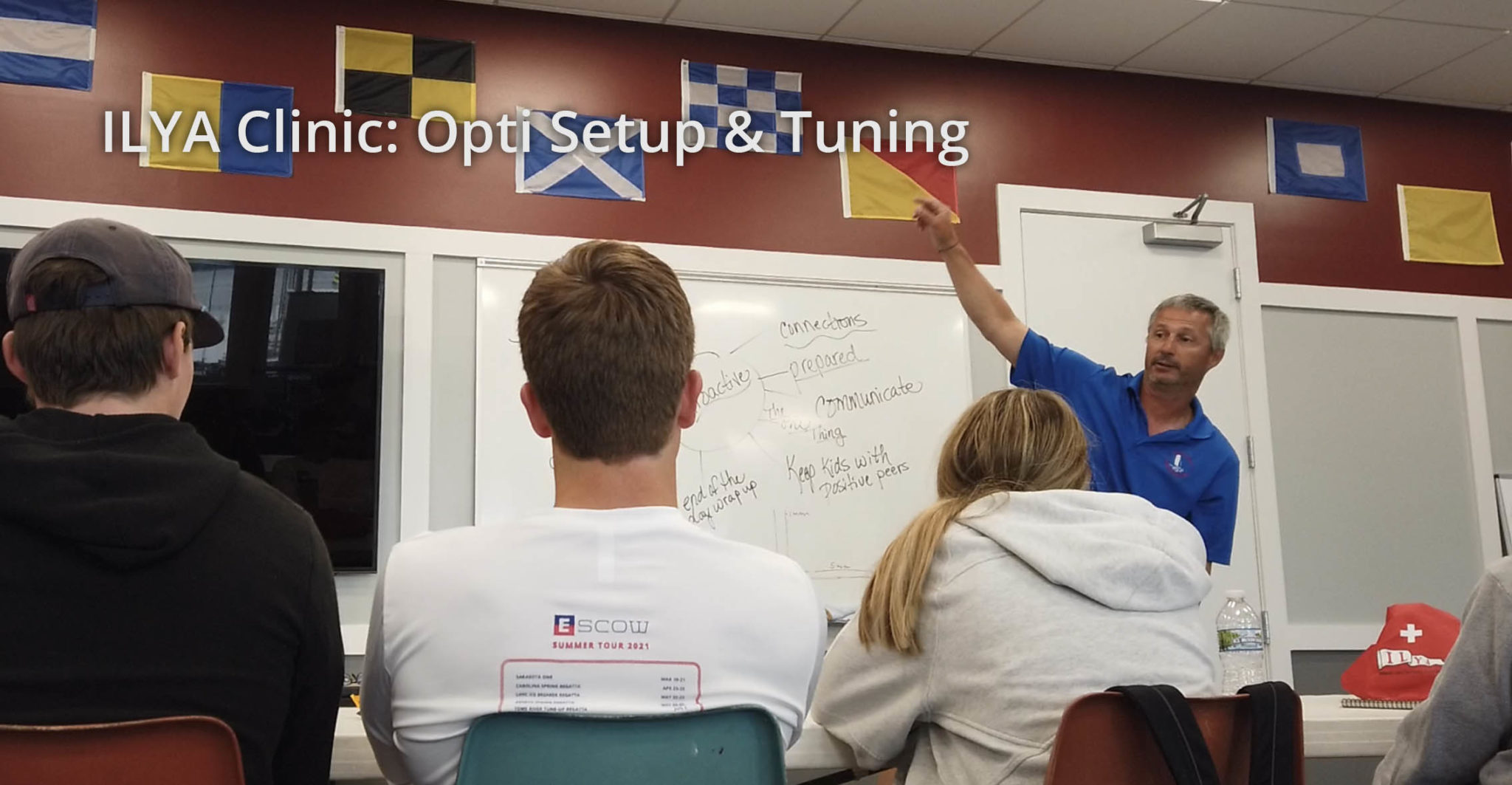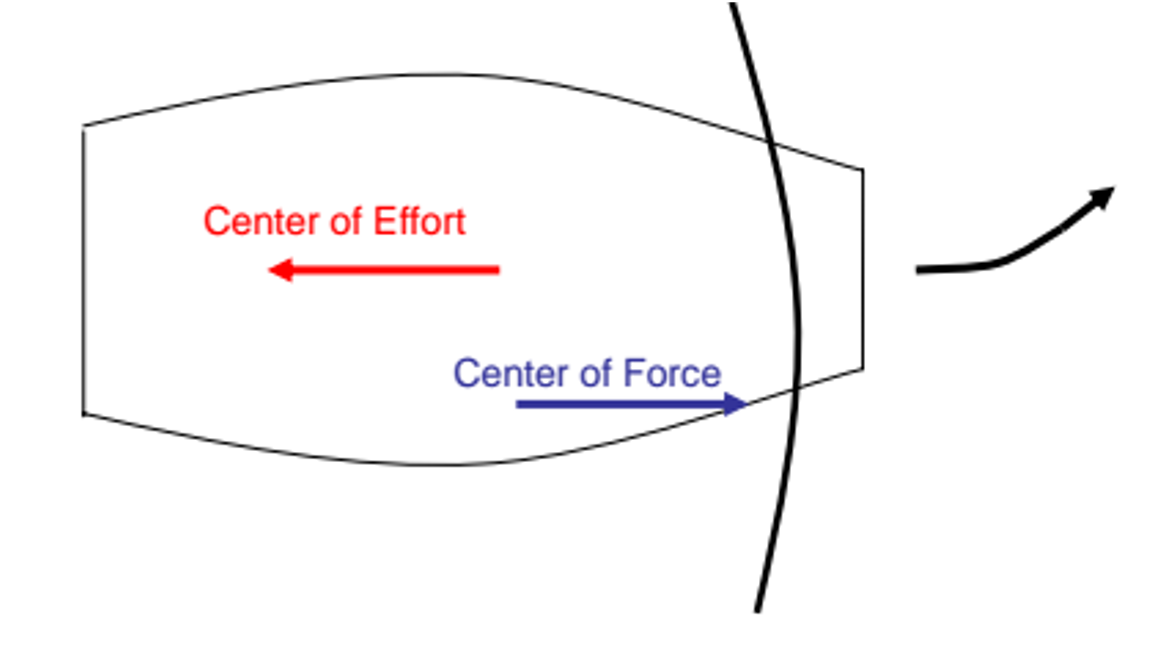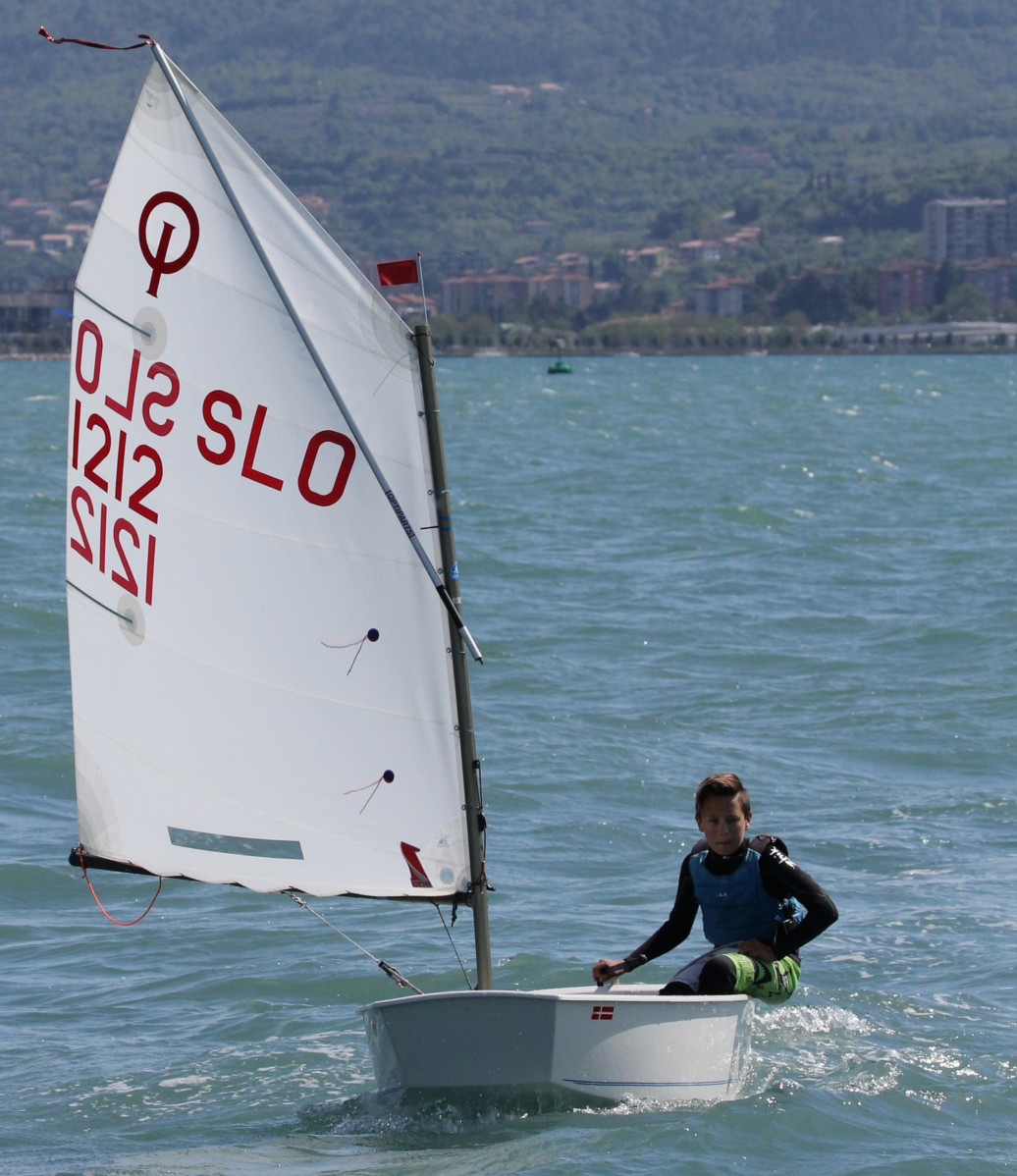In a session sponsored by the Inland Lake Yachting Association (ILYA), Marek Valasek, Executive Director and Head Coach, Geneva Lake Sailing School gave recommendations to instructors for Opti setup.
This article captures highlights from Marek’s clinic (source video is at the end of this article). The video was taken by a Lake Beulah Sailing School instructor at the event.
Equipment Retention
Opti preparation starts with not wanting to lose parts overboard. Have everything tied down. Make sure that the rudder retainer is in place. Daggerboard, Bailers, and most importantly, the MAST should be securely tied to the boat.
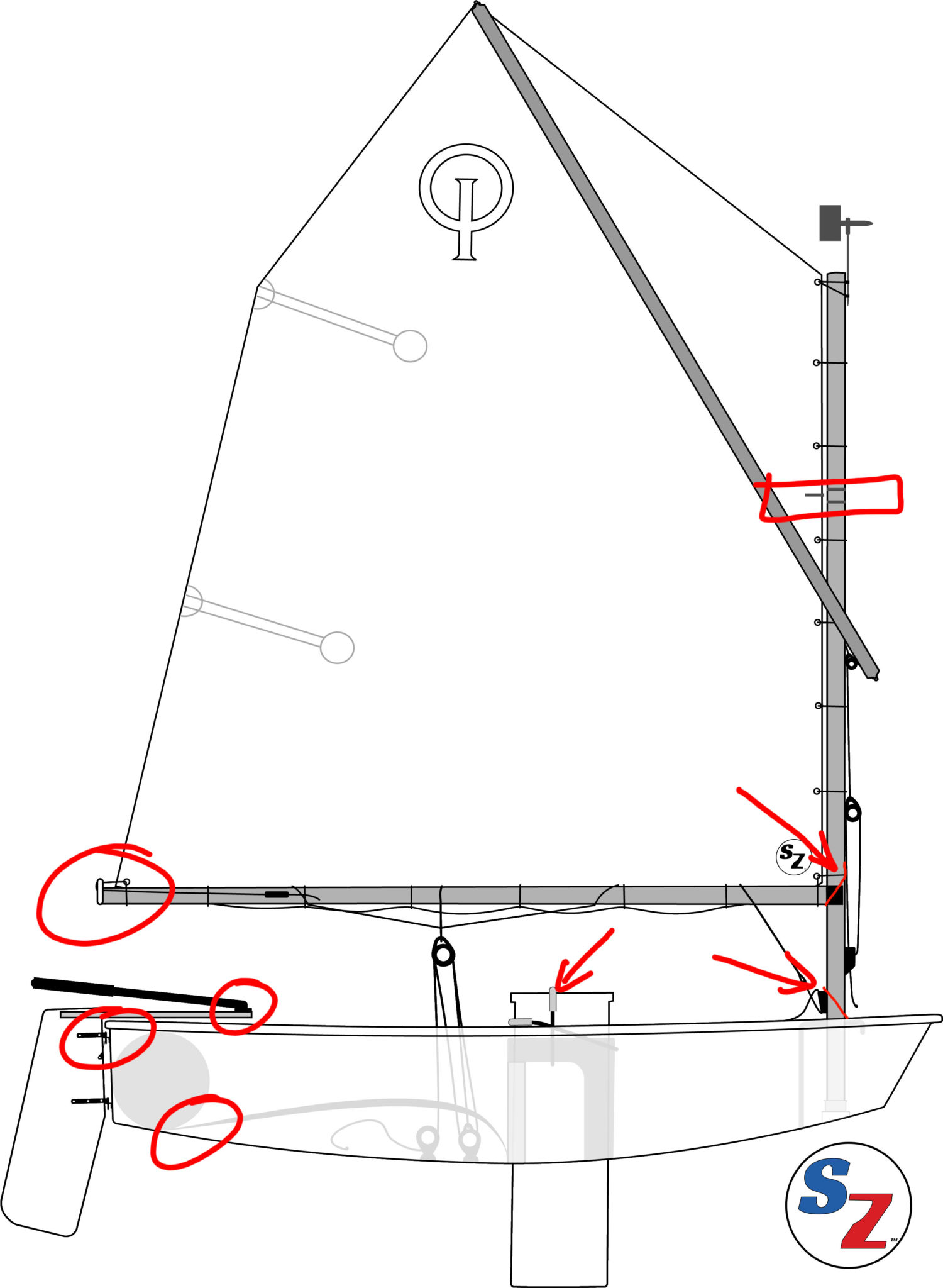
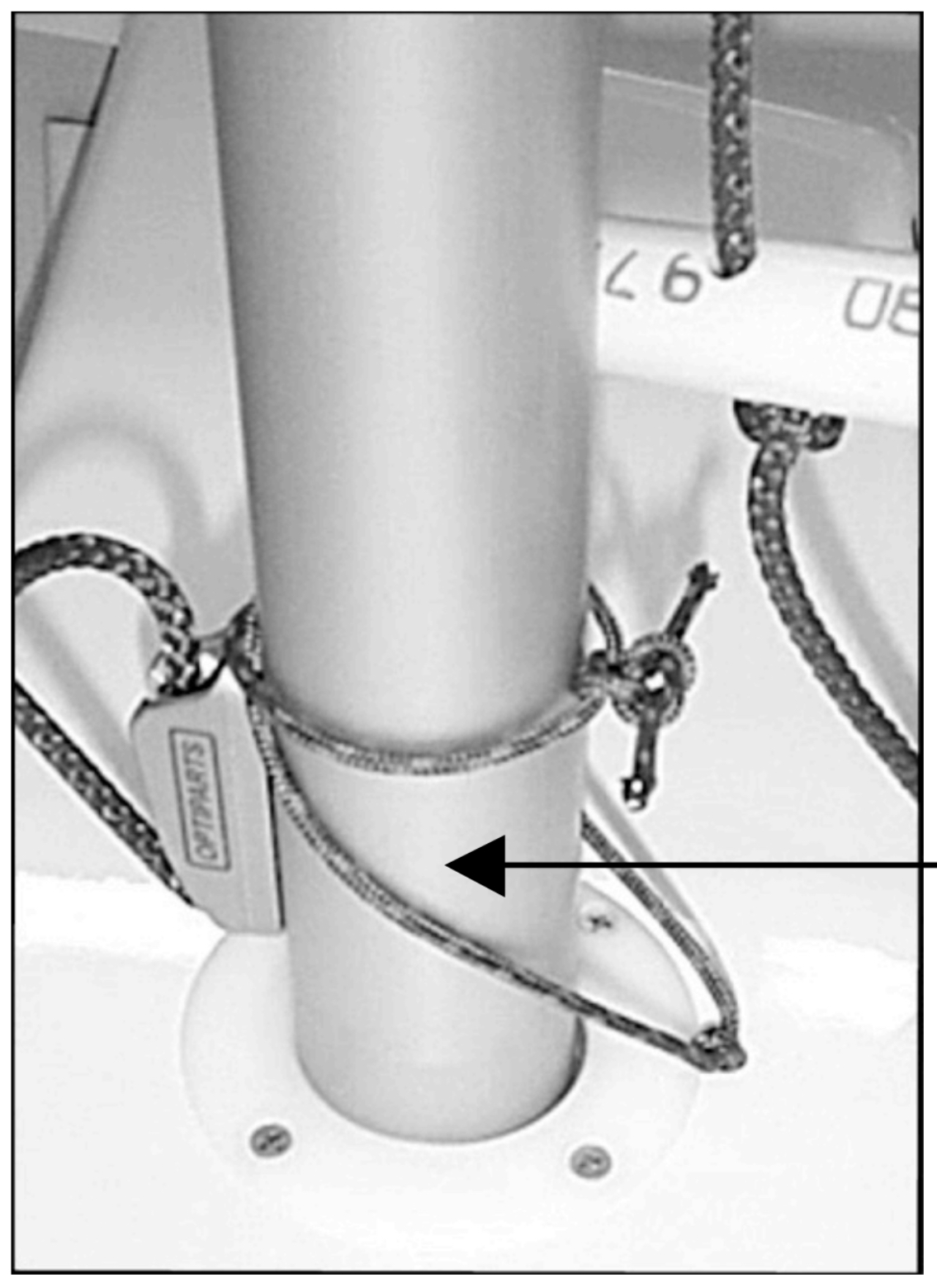
Hiking Straps: For racing, this is one of the most important adjustments that you can make on the boat. When someone buys a boat, the previous owner may have been tall, but the new owner shorter but never adjusted the straps. Test/adjust them once a year. Adjust the straps so that the sailor’s knee is just on top of the inboard side rail while hiking.
Securing the Daggerboard Retaining Line, Rudder Retaining clip and checking the Universal joint between the tiller and tiller extension for cracking are all important. Universals will degrade and break. That would be really bad during a race. Once they crack, you have maybe a month to replace it. You might want a spare on hand. The tiller end piece can also fall off. In an emergency, you can wrap layers of electrical tape around the aluminum tiller tube and then slide the end piece over that. If the handle is still loose, then it’s almost better to sail without it than to sail with a lose one.
Optiparts has a video that shows how to install their daggerboard retainer.
Sail Setup
Sail Ties
Mast: 1mm gap evenly between the sail luff edge and the mast.
Boom: 5mm gap evenly between the foot and the boom. Make sure that there is enough room along the boom for the sail to easily pass over the fittings and bridle along the boom.
After sailing a while, the knots can tighten up from wind pressure making the sail gaps along the mast and boom larger. Or…the knot can come untied due to a luffing sail shaking the knot out. To prevent this, pre-tighten the knots extra tight so that they can’t tighten more and tie the “bitter ends” off so that they will not come untied.
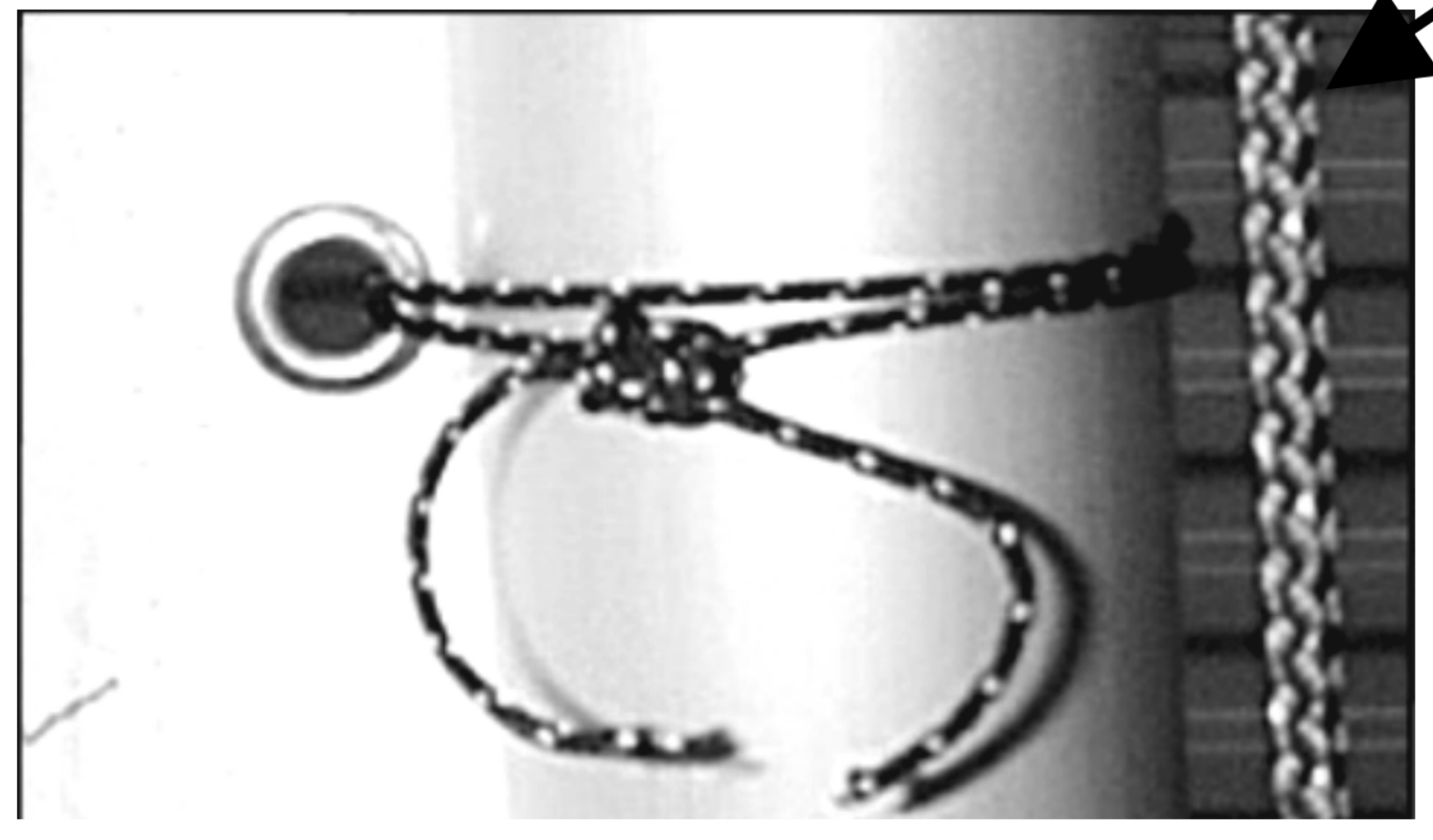
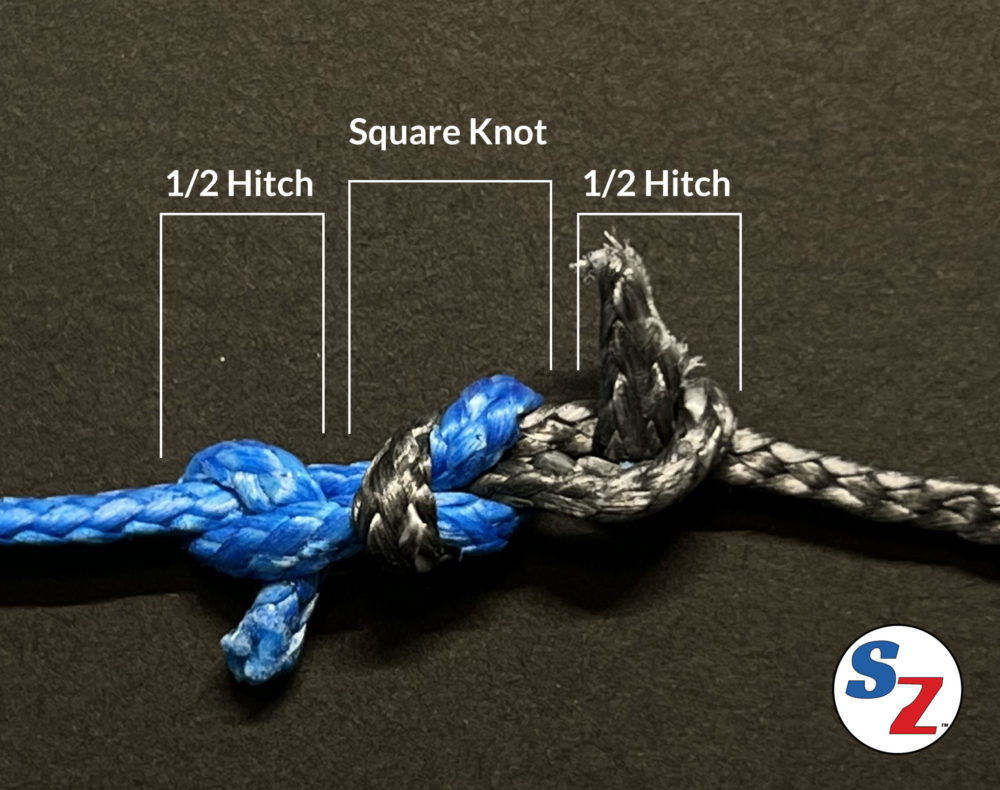
To help tighten the knots, tie them as tight as you can and then use another sail tie run through the first to help pull the knot tight. Replacing a sail tie during a race is really hard, so take the time to tie them well.
The sail ties need to be loose enough for the sail to be able to ride over the mast or boom easily without folding the sail, but not too much of a gap. Check the sail ties after each race for any that have gotten loose. If they loosen enough then your sail may also fall outside the regulations. The sail mark may fall out of range between the mast bands and could be a cause for disqualification.
Boom Preventer (Bling): If this is not engaged, your boom vang is rendered useless. Skipping this step can also result in a torn sail. Marek prefers no more than two twists. If there are too many twists, then tie the line shorter. The goal is also to keep the sail mark between the two lines on the mast and to not let the boom go too low on the mast.
From McLaughlin Optimist:
The boom bling (boom preventer) is a very important, but often omitted or misunderstood part of Optimist rigging. It works in conjunction with the vang and sprit adjuster, by restricting the downward pull from the vang. The bling fixes the inboard position of the boom on the mast and consequently the fullness or flatness of the luff. Without the bling, vang tension also affects the luff tension… By twisting the bling, the distance between the boom and bling peg is shortened, thus giving more depth in the forward part of the sail. Consequently, the less twists, the flatter the sail will be. To see how important the bling is when sailing downwind, try this: with the bling off, tighten the vang and see how easy it is to lift the outer end of the boom as if sailing downwind. The vang acts as a pivot point and allows the end of the boom to raise, just the opposite of the desired effect!
McLaughlin Optimist’s ”Optimist Basic Rigging 101”.
Outhaul:
The Outhaul line typically runs from the back of the boom, through the Clew grommet and back through an eye on the boom and then forward to a cleat. Marek suggest the following alternative.
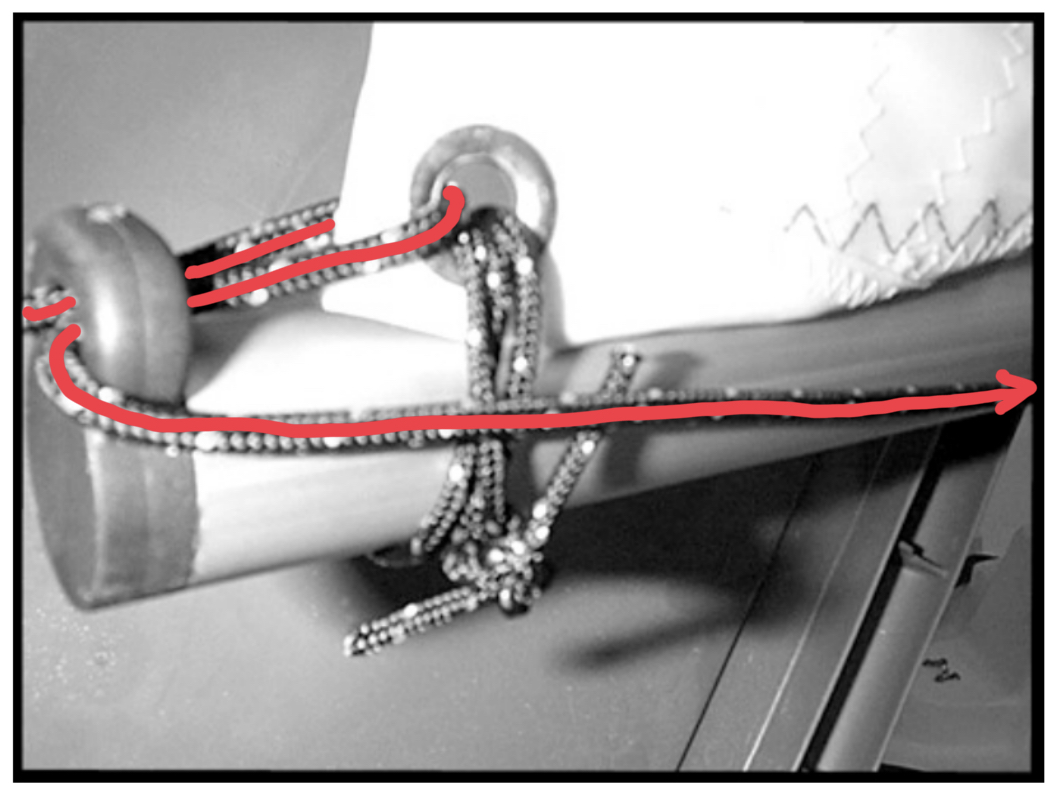
Alternative: Use a Stopper Knot at the grommet and pass the line through eye at the end of the boom and back to the cleat.
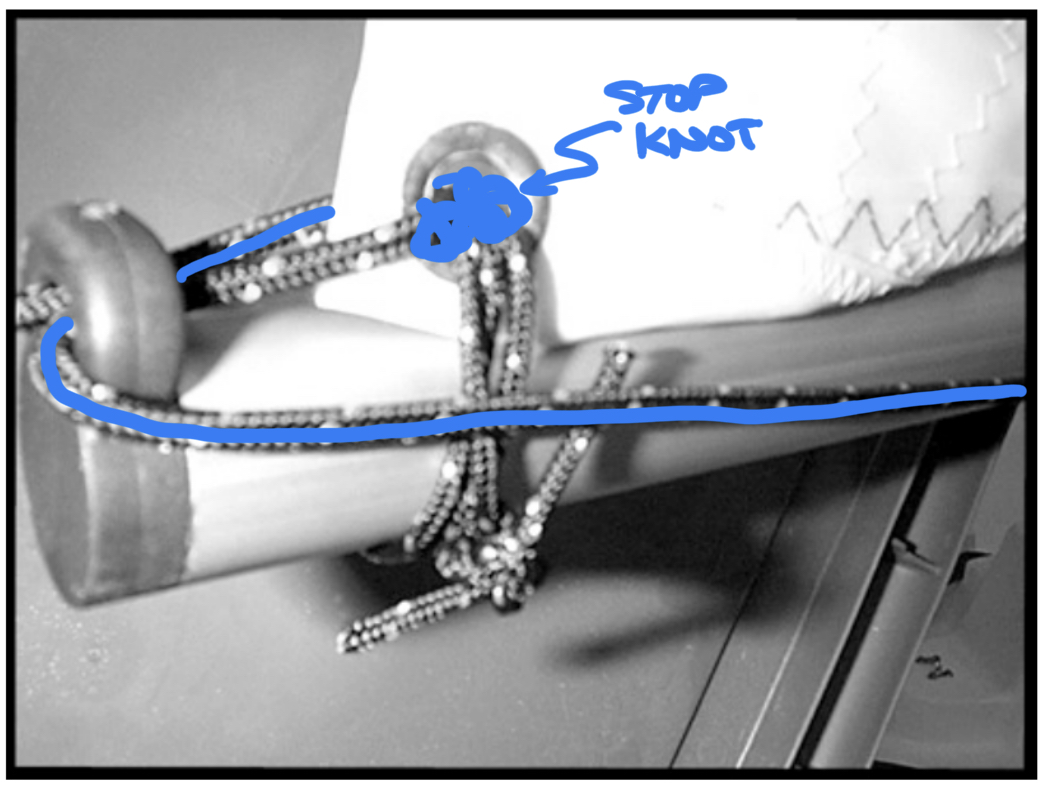
Tuning
It’s a good idea for instructors or parents to help the sailor rig and tune the boat when the sailors are new. Make sure that both work together. Don’t do the work alone for the sailor. After the sailor has had help a number of times, they need to try to rig/tune alone to lock the process into their memory.
Just properly rigging the sails can improve the sailor’s boat speed by 2-3 knots.
Sometimes sailors show up with the wrong equipment. For example, they may have a boat designed for a large sailor, but they are smaller. The boat may have the stiffest blade and largest sail appropriate for a large sailor, so some components may need to be changed. A smaller sailor may need a bendier boom and smaller sail.
Sail Selection
Sails have four basic ranges, Green (under 80 lbs), Blue (80-100 lbs) – Best option, Red (100-115 lbs), black (115+ lbs, – at this point, buy a Laser instead).
Buying too big a sail can be a disadvantage for a smaller sailor. A smaller sail can even create a pointing advantage.
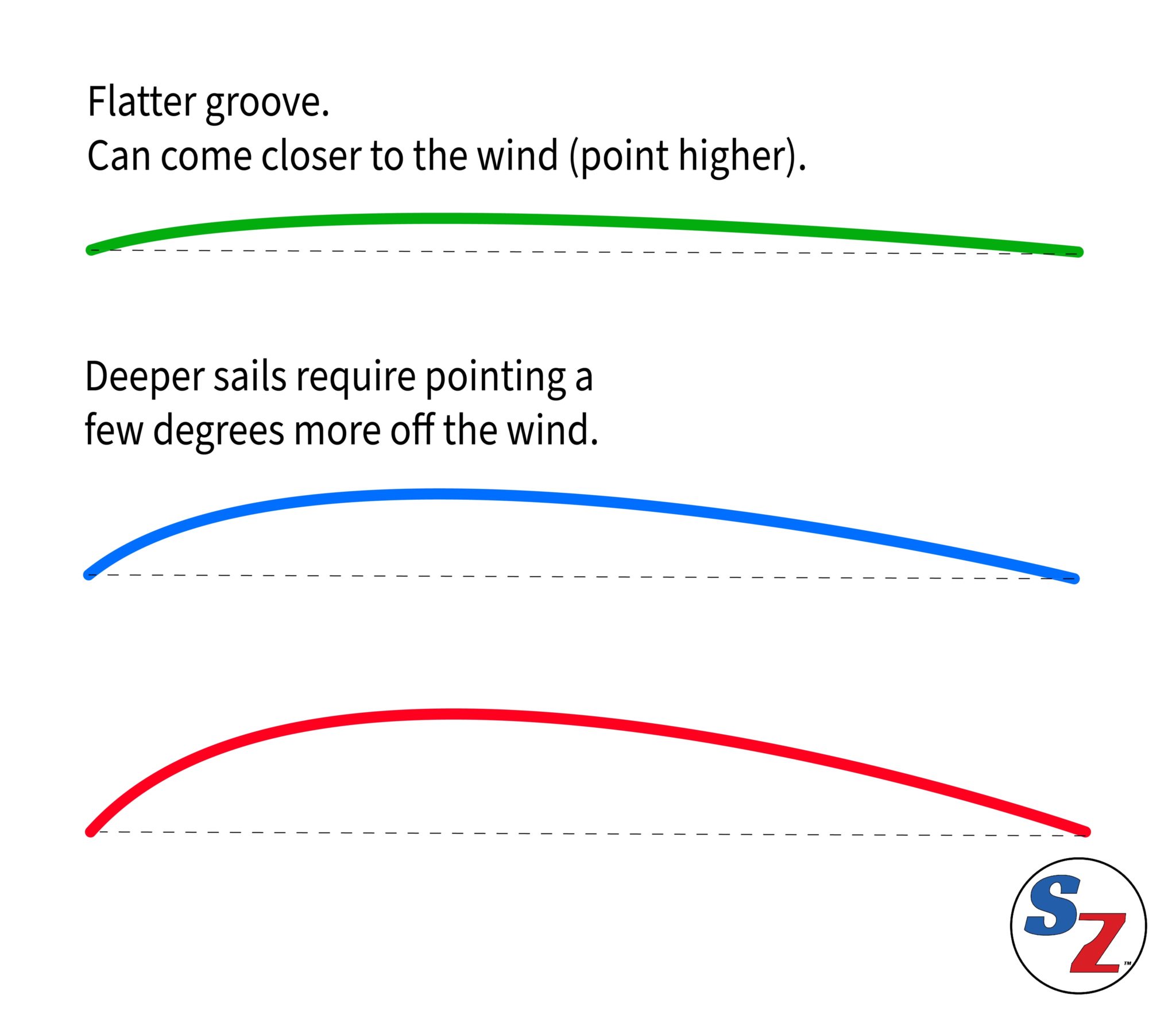
Wind Adjustments
0-5 knots: No wind
As soft as possible, a little looser at the foot, but not too much since a deep foot won’t help you gain any power when it’s light and flat.
Boom Preventer: 2-3 twists.
Luff: Should be soft, but still straight with no scalloping along the mast.
Foot/Outhaul: Can have little scallops.
Vang: Just tight enough to take out the slack to engage the boom preventer and so that the boom doesn’t pop up.
Sprit: Sail should be perfect (smooth shape) on starboard side. When on port, it should have a little “bow tie” shape in the sail towards the top. Set a little looser for downwind and tighter for upwind.
5-10 knots: Light Air
Stay in the boat or maybe on the rail, depends on sailor weight. Stand with weight on toes and butt gently by rail so that you can move if needed in the puffs.
Boom Preventer: 1-2 twists
Luff: Tight so that wrinkles are gone, but doesn’t pull.
Foot/Outhaul: Leave it as is. If choppy – leave a little looser. If flat – maybe flatten the sail a bit since you don’t need the extra power.
Vang: Go upwind and trim in as normal. Then lean forward and take the slack out of the vang. Close the leech a bit downwind so that it’s not spilling too much at the top of the sail.
Sprit: Normal
11-15 knots: Medium Air
Sitting firmly on the rail, feet under straps, shoulders out.
Boom Preventer: 1 twist
Luff: Tight. Noticeable tension.
Foot/Outhaul: If waves, don’t tighten yet. If the water is flat, then can flatten the foot a bit because you don’t need the extra power. Outhaul reflects the sea state the most.
Vang: Trim main sheet / boom half the distance down (over trim) and then snug vang.
Sprit: Heavy sailors and not overpowered, still perfect shape on starboard. Lighter sailors who are starting to be overpowered can tighten the sprit until there is a little sail wrinkle on starboard. Set up for the lull. Marek prefers the sail on the looser side rather than tighter, if the boat can be controlled.
15+ knots: Heavy Air
Straight out hiking. Note: Heavy wind for a small sailor may be 11-15 knots.
Boom Preventer: 0 twists
Luff: Maximum luff tension. Starts dragging the draft in the sail down the sail and opens the top, which is what you want.
Foot:
Vang: “Super” vang. Set the vang so that the boom is almost touching the deck. Super vanging bends the mast to be effective, but that can create excessive windward helm. You need to test to see if you can get out of irons. If not, then you need the Rake the mast forward. This is contrary to typical heavy air recommendations in other boats. Proper, tight, heavy air vang in an opti moves the center of effort behind the centerboard by bending the mast. This will cause enough weather helm to want to force the bow into the wind. Counteract this by raking the mast forward a bit. For lighter sailors, the boat needs a slightly leeward helm.

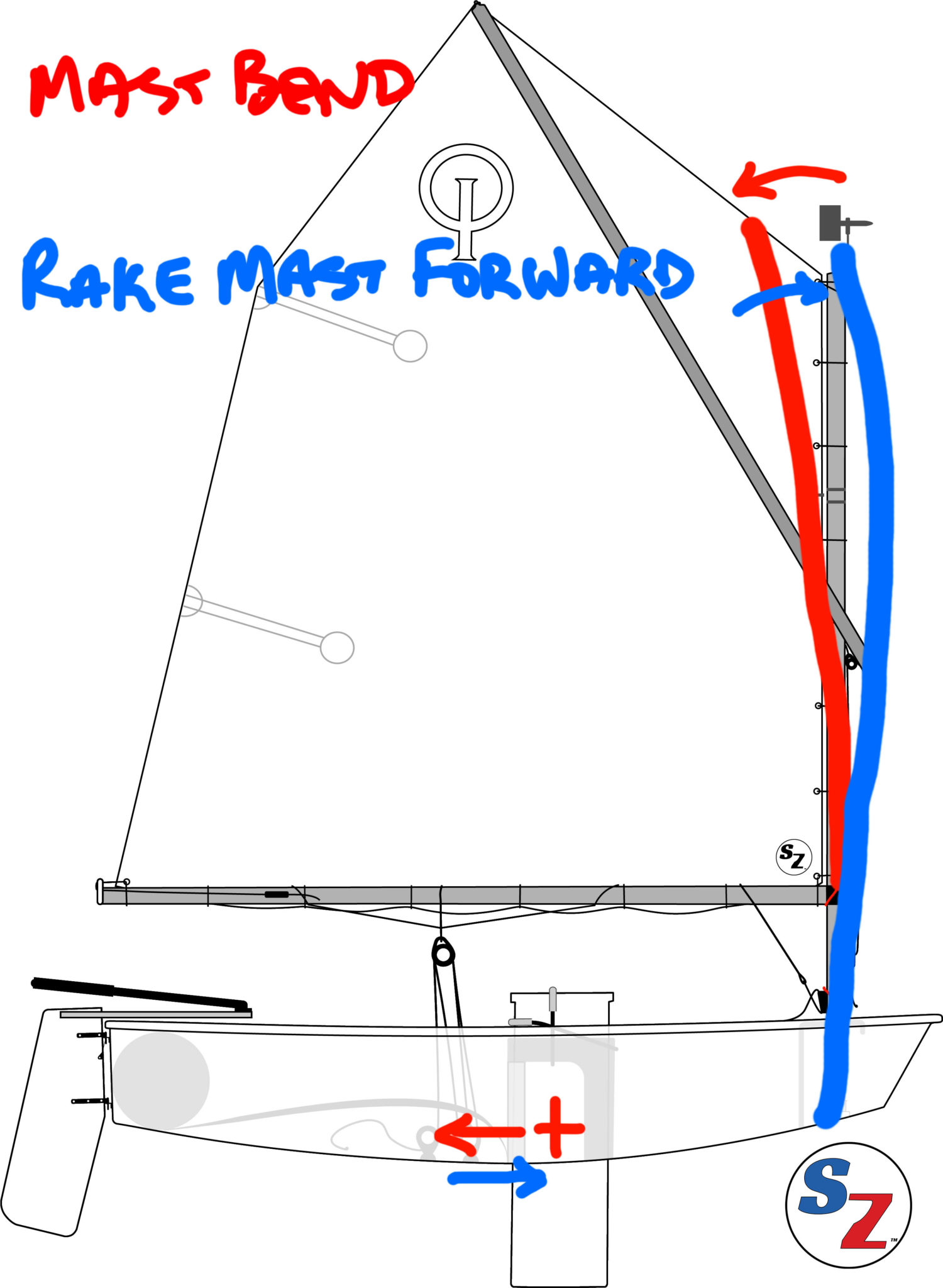
Sprit: If over-powered, put a huge wrinkle in the sail with a counter-intuitive move – ease the sprit. This takes the top half of the sail out of the game and focuses on the lower half. While this looks bad, it works to survive the race.
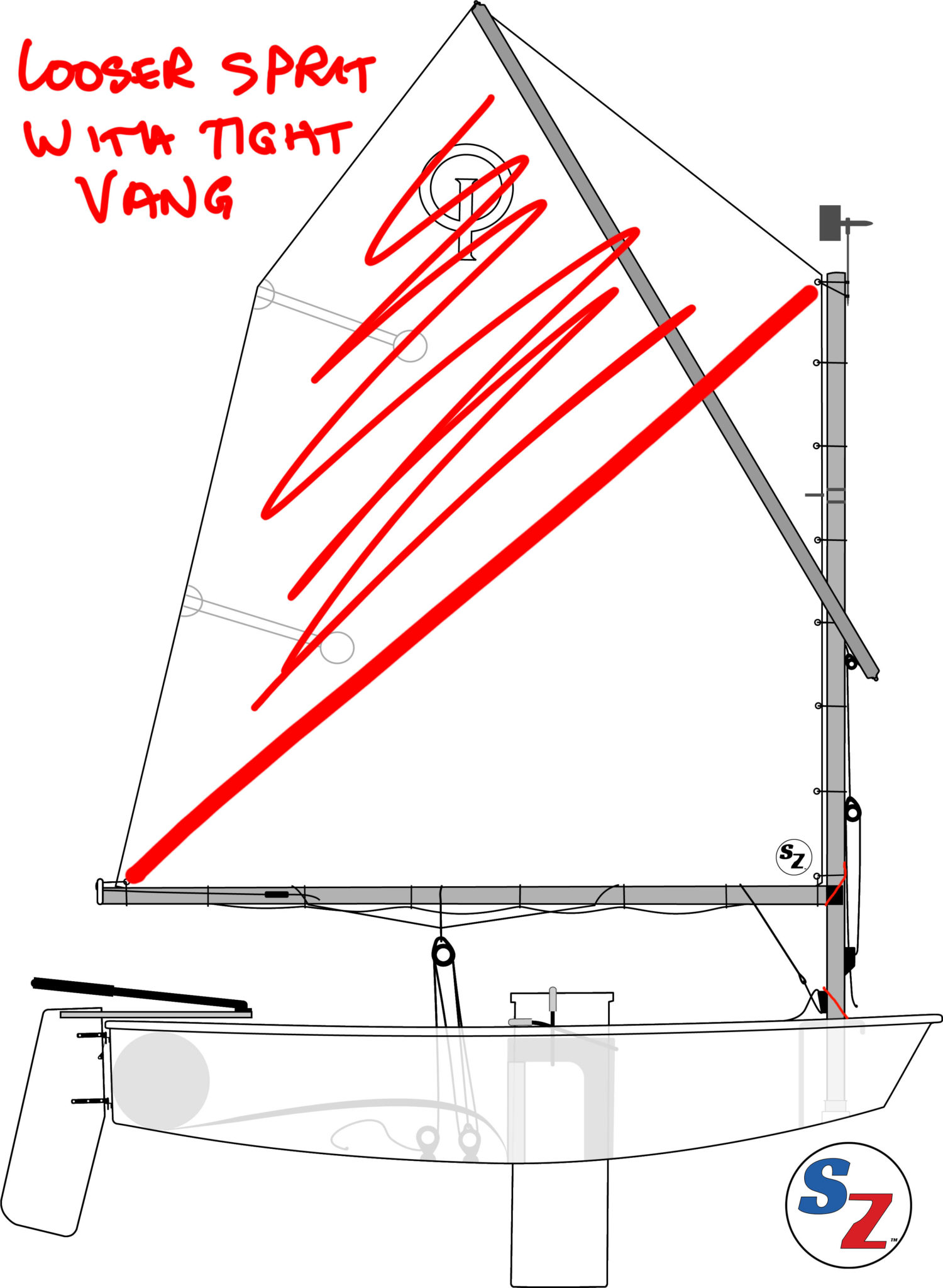
If this is still too overpowered, the last resort is to pull the board up about 4-6 inches.
If you would like to watch the video yourself, here is the source video for this article on Opti Preparation & Tuning filmed at the Buddy Melges Sailing Center.
Related Content
Geneva Lake Sailing School – Opti Sail Setup: GLSS Setup Guide
McLaughlin Optimist’s Optimist Basic Rigging 101
Image Credit – black and white images are from McLaughlin Optimist.

